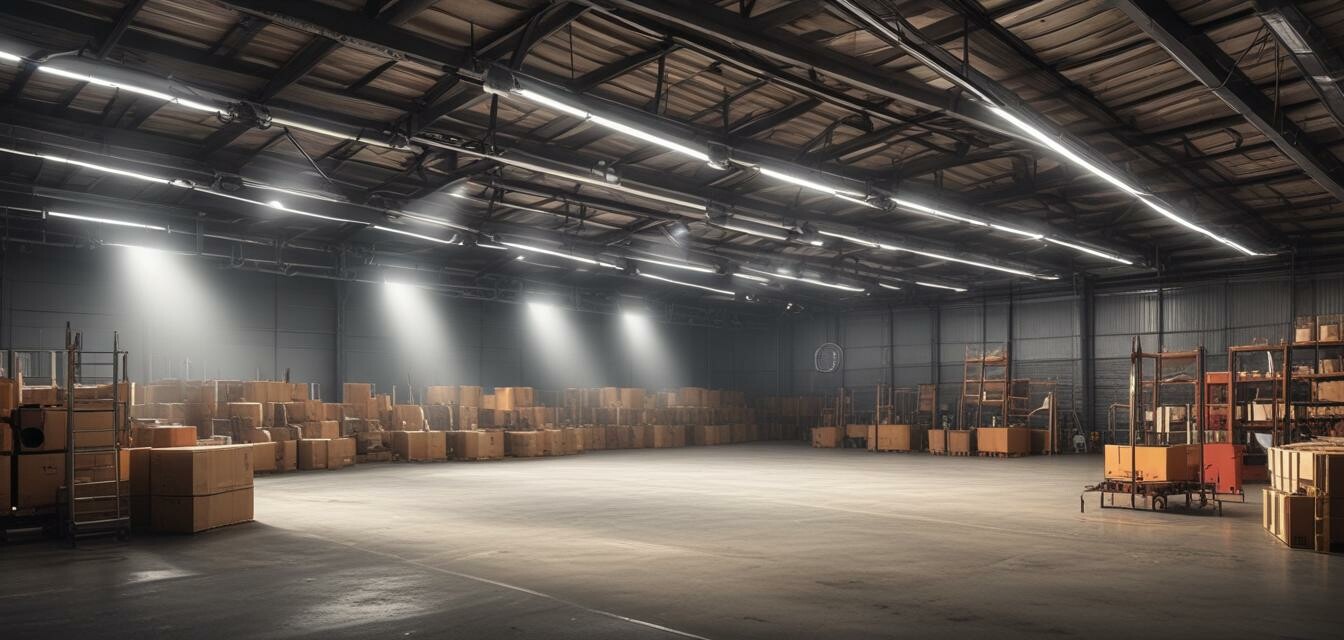
Best Practices for Installing Industrial Lighting
Key Takeaways
- Prioritize energy efficiency to reduce long-term costs and environmental impact.
- Always adhere to safety standards to ensure the well-being of workers.
- Choose the right type of lighting for specific industrial applications for optimal performance.
- Consider smart lighting solutions to enhance control and flexibility.
- Regular maintenance is essential for longevity and performance of the lighting systems.
Installing industrial lighting can drastically improve the productivity and safety of your workspace. Selecting the right fixtures and adhering to best practices can contribute to a brighter, more efficient environment. This article will guide you through the best practices for installing industrial lighting solutions, focusing on efficiency, safety, and maintenance.
Understanding Industrial Lighting Options
The landscape of industrial lighting is vast, with various options catering to different needs. Here's a quick comparison of common types of industrial lighting:
| Lighting Type | Best Use | Pros | Cons |
|---|---|---|---|
| LED High Bay Lights | High ceilings, warehouses | Energy efficient, long lifespan | Higher initial cost |
| Fluorescent Lights | General illumination | Cost-effective, good color rendering | Shorter lifespan than LEDs |
| Metal Halide Lights | Athletic fields, parking lots | Bright, high lumen output | High energy consumption |
| Smart Lighting | Control systems | Flexible control, energy management | Requires initial setup and investment |
Installation Best Practices
1. Plan Your Layout Efficiently
Before installation, assess the space and determine the ideal placement of lights. Consider the following points:
- Work areas that require the most light should be prioritized.
- Use reflective surfaces to enhance light distribution.
- Ensure there are no obstructions that block light from reaching work areas.
2. Focus on Energy Efficiency
Utilizing energy-efficient lighting solutions can lead to substantial savings. Here’s how to achieve it:
- Select LED lighting fixtures for lower energy consumption.
- Implement motion sensors to reduce unnecessary power use.
- Install dimmers to adjust brightness levels based on needs.
3. Maintain Safety Standards
Safety should always be a priority when installing lights in an industrial setting. Implement the following measures:
- Ensure all electrical connections are up to code.
- Use fixtures designed for industrial use to withstand harsh environments.
- Regularly inspect lighting installations for any signs of wear or damage.
4. Consider Smart Lighting Solutions
Smart lighting can revolutionize the efficiency of your industrial setting. Benefits include:
- Remote control of lighting systems.
- Ability to track energy usage and adjust accordingly.
- Flexible scheduling for lighting configurations.
5. Regular Maintenance is Key
To ensure longevity and performance, schedule consistent maintenance checks. This includes:
- Cleaning fixtures to prevent dust build-up.
- Replacing burnt-out bulbs promptly.
- Testing emergency lighting systems regularly.
For more insights into electrical projects, consider reading our detailed guide on tools for electricians, which provides essential information for maintaining your lighting systems.
iplusmile 400 Pcs Wire Protector
A comprehensive solution for organizing cables and preventing strain, offering durability and reliability for all your industrial lighting setups.
Learn MoreConclusion
Proper installation of industrial lighting is crucial for enhancing productivity and maintaining safety. By focusing on energy efficiency, adhering to safety standards, and utilizing smart lighting solutions, you can create an effective lighting system that meets the demands of your industrial environment. Don't forget to include regular maintenance in your operational practices to ensure your systems remain functional and efficient.
Tips for Electricians
- Always use certified products to minimize risks and ensure safety.
- Stay updated with the latest regulations concerning industrial lighting.
- Conduct regular training sessions for teams to keep them aware of best practices.
